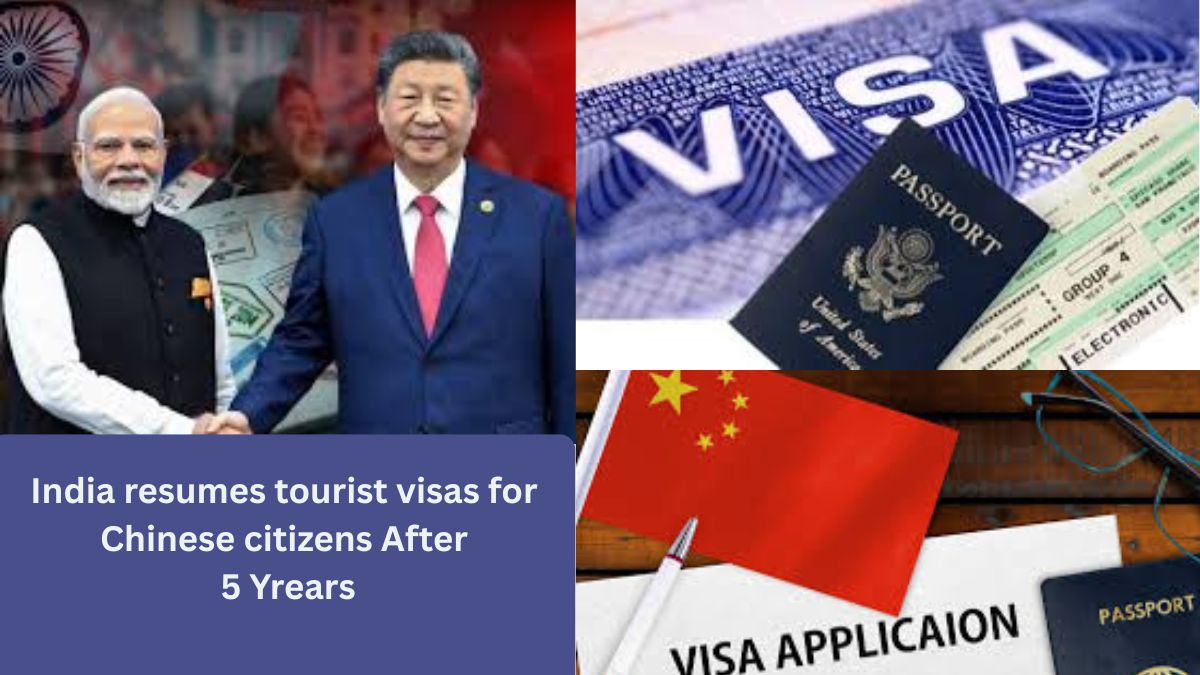In a strong signal of diplomatic recalibration, India resumes tourist visas for Chinese citizens after a five-year suspension imposed in the aftermath of the 2020 Galwan Valley clash. The move marks the first major people-to-people reconnect between the two Asian giants since bilateral ties entered a deep freeze, signalling a willingness to gradually de-escalate tensions while reopening economic and cultural pathways.
The government confirmed that Chinese nationals across the world can now apply for Indian tourist visas through existing global consular channels. The suspension—one of the longest administrative blocks on travel between the two countries—was widely perceived as a diplomatic response to strained border tensions and stalled disengagement talks. Its reversal now signals a pragmatic shift.
A Step Toward Normalisation in a Frozen Relationship
Diplomats describe this development as “one more inch of normalisation”, indicating that although broader strategic tensions remain, both nations are inching toward restoring limited normalcy. This step follows earlier confidence-building measures taken throughout 2024 and 2025, including:
- Revival of direct passenger flights between major Indian and Chinese cities
- Resumption of high-level military disengagement talks
- Progress on communication hotlines in border zones
- Incremental trade facilitation in non-sensitive sectors
While none of these actions resolves the core boundary dispute, they collectively indicate a cautious reopening of channels that had been largely dormant for years.
Tourism, Trade & Travel: What Changes Now?
The resumption of tourist visas is expected to strengthen travel-driven sectors such as hospitality, aviation, cultural tourism, education and retail. Before the pandemic and the border crisis, China was among the world’s fastest-growing outbound travel markets. Even a small revival of Chinese tourist inflow could benefit India’s tourism economy, especially destinations like:
- Ladakh (pre-2020 a popular route, now heavily regulated)
- Rajasthan and Agra
- Kerala wellness tourism circuits
- Buddhist pilgrimage routes such as Bodh Gaya, Sarnath and Kushinagar
Travel experts estimate that India may initially see limited but steady traffic as travel advisories relax.
Why now? Strategic Interpretations
Policy observers suggest multiple reasons behind India’s decision:
1. Economic Logic
Global tourism supply chains are recovering, and India aims to attract high-spending source markets.
2. Global Optics
By easing restrictions, New Delhi signals that it is open to engagement even with nations with which it has disputes, strengthening India’s diplomatic positioning.
3. Stability Signalling
Resuming visa projects’ confidence following the stabilisation of several border sectors through disengagement protocols.
4. Competitive Asian Diplomacy
As both nations compete for influence in the Global South, calibrated gestures help maintain diplomatic balance without compromising national security interests.
Security Concerns Remain, but Approach Is Measured
Officials have emphasised that easing visas does not imply dilution of security protocols. Enhanced digital verification, scrutiny for sensitive regions and layered clearances will continue. The visa revival is a pathway to engagement—not a sign of full normalisation.
What This Means for the Future
The resumption of tourist visas may eventually pave the way for:
- Greater cultural exchanges
- Academic partnerships
- Revived business delegations
- Diplomatic summits on trade and connectivity
Experts note that India and China are likely to continue their dual-track approach—cooperation in specific civilian sectors while maintaining firm positions on strategic boundaries.
Related: India US Defence Deal: US Approves $92M Missiles
Related: Modi to Inaugurate Natural Farming Summit 2025 in Coimbatore
Related: Shocking India Solar Growth: Rooftop Installations Jump 34%























